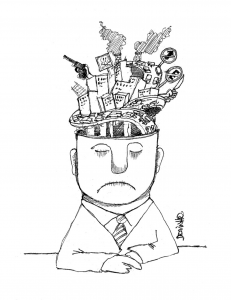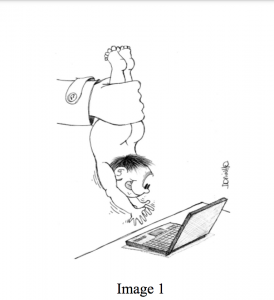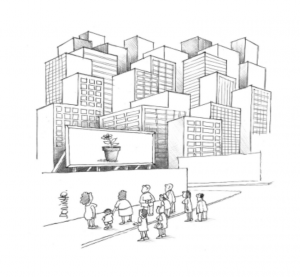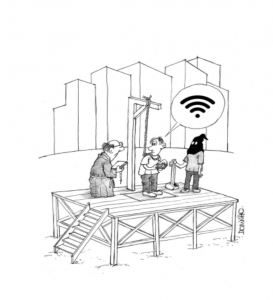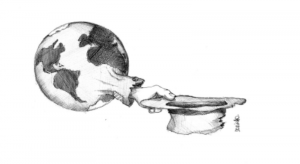Using Still Images to Understand and Create
https://bit.ly/3pDDOxT (From smart cities to MIL cities: metrics inspired by UNESCO‘s vision)
by Mark-Jeffery Deans, University of the West Indies
This lesson was created as the culminating project in the The Association for Media Literacy’s Spring 2022 Additional Qualifications Course.
The AML is grateful to Mark-Jeffery Deans for his creativity and permission to share this lesson. Please credit Professor Deans when you share the lesson.
Lesson Overview
Class Time: 45 Minutes
This lesson will focus on key concepts:
2 Media construct versions of reality
3 Audiences negotiate meaning
5 Media communicate values messages
The lesson will help students to understand how media construct messages that influence our perceptions of the world around us; how media messages are constructed (purposefully made by someone) and how different people may experience the same media message differently.
Class Profile
Grade 11-12 Students
Class Profile: Year 1 Undergraduate students in the Department of Library and Information Studies. As part of their programme of studies, these students would have been exposed to Information Literacy; either as a course or as a stand alone orientation session. However the pedagogical use of media (inclusive of cartoons) in its different forms would not have been part of their curriculum.
Lesson Objectives
At the end of this lesson students should be able to:
1. Develop an informed and critical understanding of how media (cartoons/images) produce meaning.
2. Consider the techniques used by media to influence thinking/attitudes.
3. Develop an appreciation for Media Literacy through exploring, analyzing and reflecting on images.
4. Use media to create and send messages of their own.
Opening Exercise
Step 1: Students will be asked to think about a cartoon that appeals to them.
Step 2: They will be asked the following questions from the Media Triangle:
⮚Why does this particular cartoon appeal to you?
⮚What makes something funny when expressed in cartoon form?
⮚What makes cartoons a good vehicle for satire or humour?
Step 3: Students will be introduced to cartoon/image #1 (Dangling Baby Before Computer)* to discuss the purpose(s) of media.
They will be asked the following questions from the Media Triangle:
⮚What do you think is the creator’s intended purpose of this cartoon/image?
⮚Is it to entertain, educate, inform or persuade?; how could it be a combination of purposes?
Deconstructing Meaning from Media Messages
Step 1: Students will be presented with five (5) cartoons/images about media to compare and rank in order of their significance/appeal to them.
Step 2: Students will be led into a discussion about media messages. They will be asked:
⮚What meanings do you make about media when looking at an image?
⮚How important do you think the message is? Why?
⮚How accurate is the message to what is happening in society?
⮚Why might the cartoon form more effectively communicate its messages than a written form in your view?
Evaluation
Step 1: Students will be placed in groups of twos.
Step 2: They will be asked to create or present their own cartoon/image representing the impact of media on society.
Step 3: Students will be asked to select from among their classmates work, the cartoons they believe best represents its intended media message and why?
Step 4: They will be asked the following questions through the Media Triangle
⮚What message are you sending?
⮚Do you believe the message is clear, why?
Assessment AS Learning (Diagnostic)
Students will be asked to post to a google classroom discussion board their responses to Steps 1 and 2 of the opening exercise of this lesson. They will be asked to comment on at least one of their classmate’s responses. This will allow the teacher to identify their current knowledge, skills and capabilities in drawing meaning from cartoons/images.
Assessment FOR Learning (Formative)
Throughout the lesson, concerted effort will be made to observe students non-verbal feedback in order to determine whether or not the steps in the lesson are clear or ambiguous. Changes to the lesson will be made based on students’ responses or lack thereof.
Assessment OF Learning (Summative)
Step 4 of the evaluation section of this lesson will provide information and overall feedback of the teaching learning process. Students being able to select from among their classmates work, the cartoons they believe best represents its intended media message and explaining why, will provide evidence (demonstration) of their overall grasp of the objective of the lesson.
* The images used in this lesson are part of a UNESCO media literacy publication: From smart cities to MIL cities: metrics inspired by UNESCO‘s vision edited by Mitsuru Yanaze & Felipe Ortiz

